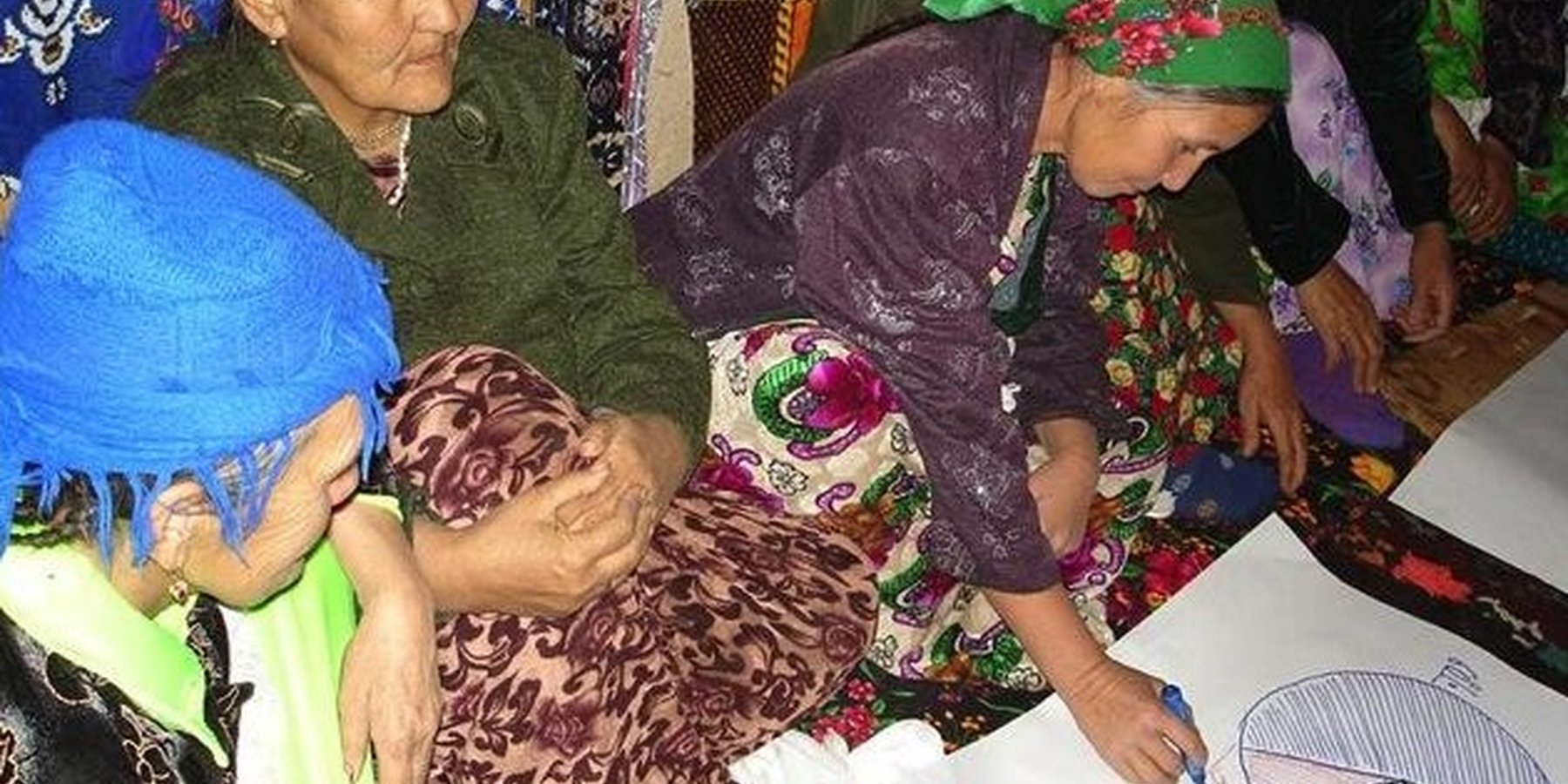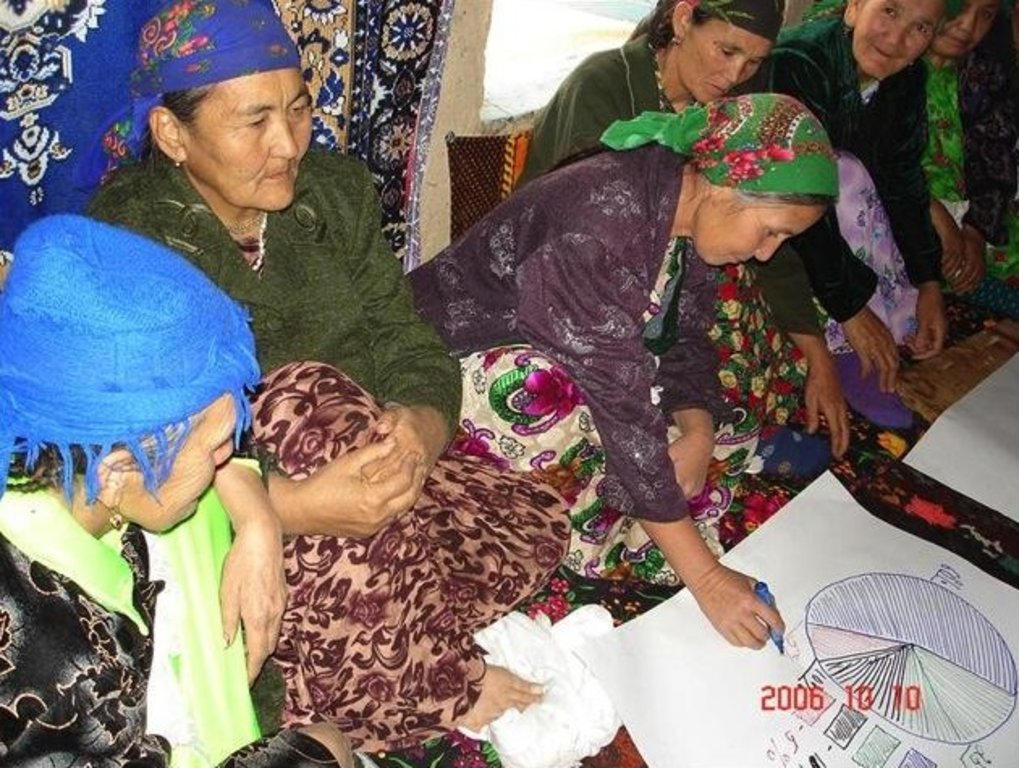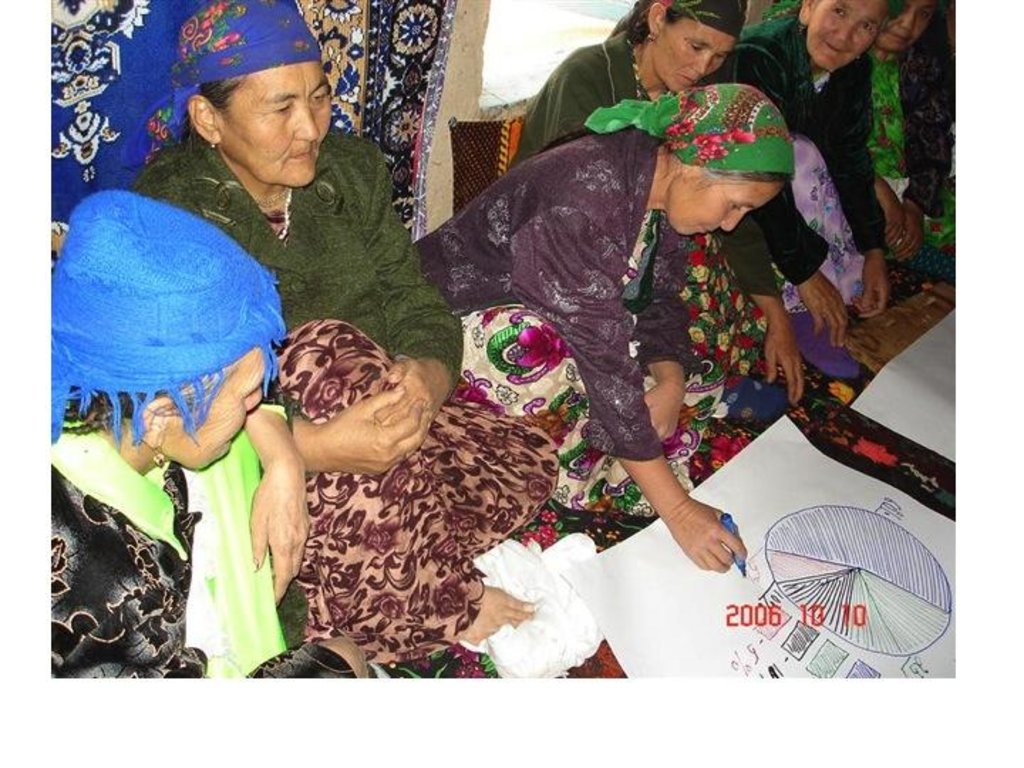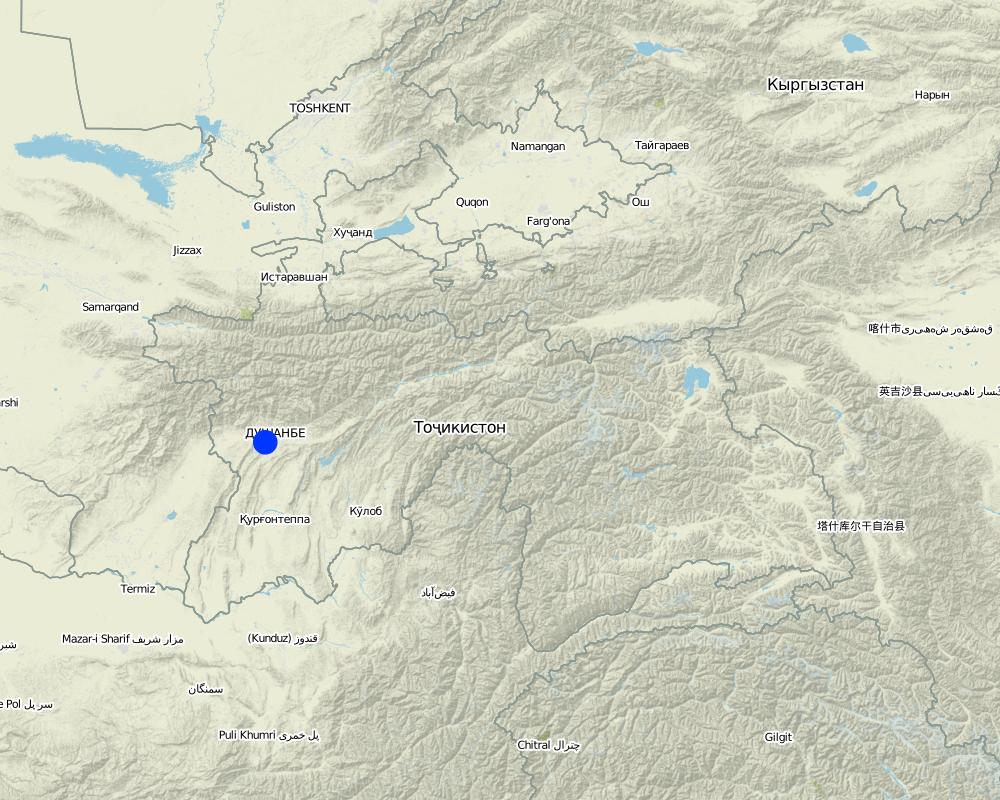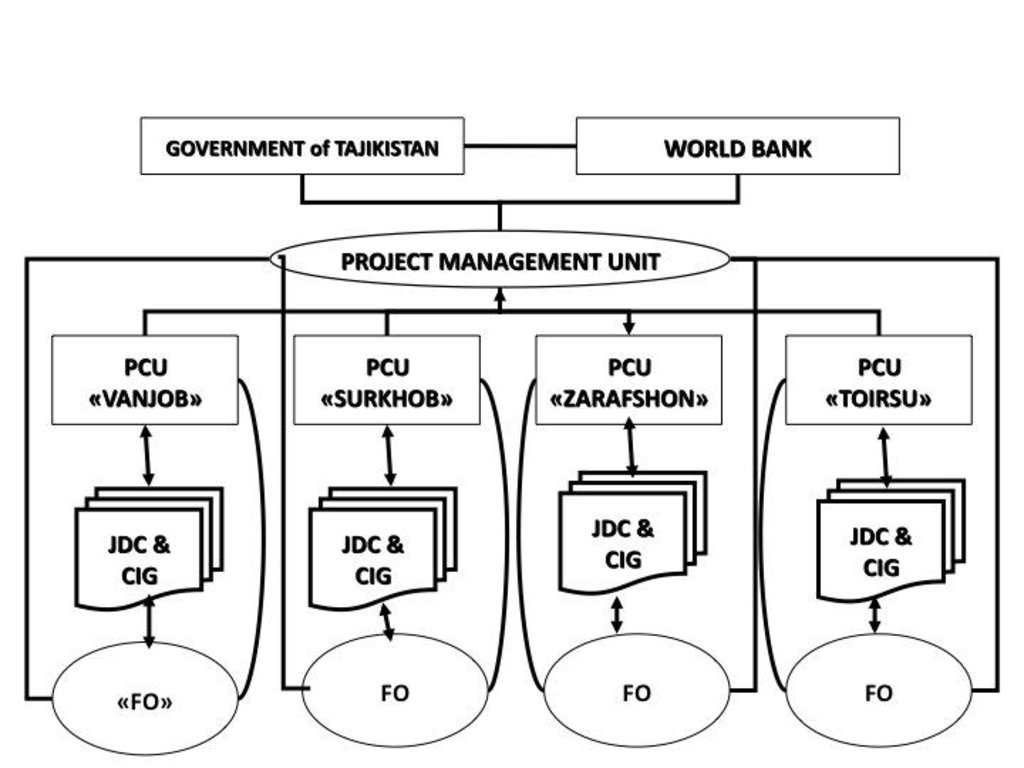Village-level participatory planning for sustainable agriculture and land management [Tajikistan]
- Creation:
- Update:
- Compiler: Nandita Jain
- Editor: –
- Reviewers: David Streiff, Alexandra Gavilano
approaches_2447 - Tajikistan
- Full summary as PDF
- Full summary as PDF for print
- Full summary in the browser
- Full summary (unformatted)
- Village-level participatory planning for sustainable agriculture and land management : Julie 7, 2017 (inactive)
- Village-level participatory planning for sustainable agriculture and land management : Julie 7, 2017 (inactive)
- Village-level participatory planning for sustainable agriculture and land management : Aug. 10, 2017 (inactive)
- Village-level participatory planning for sustainable agriculture and land management: Nov. 2, 2021 (public)
View sections
Expand all Collapse all1. General information
1.2 Contact details of resource persons and institutions involved in the assessment and documentation of the Approach
SLM specialist:
Mott Jessica
World Bank
United States
Name of the institution(s) which facilitated the documentation/ evaluation of the Approach (if relevant)
World Bank (World Bank) - United States1.3 Conditions regarding the use of data documented through WOCAT
When were the data compiled (in the field)?
10/10/2016
The compiler and key resource person(s) accept the conditions regarding the use of data documented through WOCAT:
Ja
1.4 Reference(s) to Questionnaire(s) on SLM Technologies
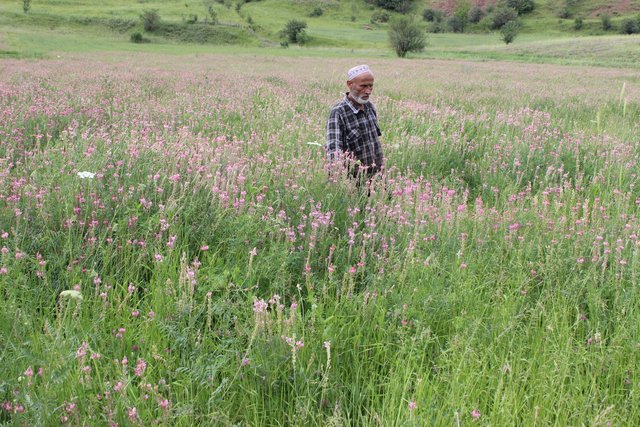
[Tajikistan]
None
- Compiler: MIZROBSHO AMIRBEKOV
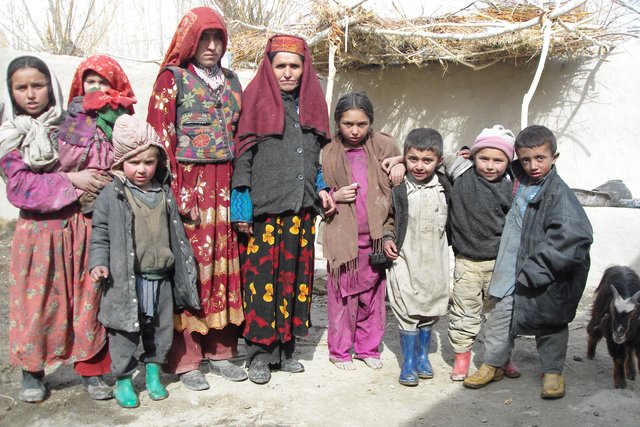
Использование источников воды при установлении акведуков для освоения … [Tajikistan]
None
- Compiler: MIZROBSHO AMIRBEKOV
2. Description of the SLM Approach
2.1 Short description of the Approach
Design and implementation of participatory planning for village-level sustainable agriculture and land management investments through small grants for groups of upland farmers.
2.2 Detailed description of the Approach
Detailed description of the Approach:
Aims / objectives: As part of the CAWMP, participatory planning aimed to generate village-based community action plans (CAPs) that identified priority investments and beneficiaries for small grants to sustainably increase rural production. A total of 402 three-year plans were developed, through which about 4000 investments in four upland project sites were funded that resulted in increased livelihood assets for over 43,000 households and more than 96,000ha under improved land management practices.
Methods: Under supervision of a government-appointed Project Management Unit (PMU), four international facilitating organizations (FOs) were contracted to work closely with local field coordination units and Jamoat (“sub-district”) Development Committees (JDCs). An operational manual laid out guidelines for developing CAPs and the management of rural production investments. Activities could be proposed for three types of investment that would increase/improve: a) farm productivity, b) land resource management and c) small-scale infrastructure to support rural production. CAPs were required to include: (i) identifiers such as a location map, numbers of beneficiaries, area covered; (ii) an indicative list of investments and associated Common Interest Groups (CIGs) by investment type and cost; (iii) estimate of labor and materials needed; (iv) estimates of beneficiary contribution for each investment and (v) list of beneficiaries resulting from the improvements, and (vi) signed agreements to participate in the cost sharing, labor provision and subsequent operation and maintenance. Within each village, fixed amounts of funding were available and were exceeded by the value of proposed investments. Thus villagers considered the available budget, number of beneficiaries and associated risks when selecting investments (see TAJ044 for details). A beneficiary contribution of at least 25% of the value of the grant was required. In some cases, FOs and JDCs obtained other financing for activities outside of CAWMP.
Stages of implementation: Key steps in the implementation included: 1) Training of facilitators in participatory planning 2) Open village assembly introducing CAWMP and the CAP guidelines; 3) Participatory rural appraisals (PRA); 4) Sharing of findings in village assembly and identification of potential rural investments; 5) Prioritizing proposals and formation of CIGs; 6) Circulation of CAP, e.g., public display in JDC offices; 7) Preparation and submission of rural investment proposals with assistance from FOs and PCUs to JDCs/JRCs for initial screening and approval; and 8) Periodic meetings to review CAPs.
Role of stakeholders: Within villages, vulnerable households were identified and appraised through the use of PRA tools, such as wealth ranking and villager consultations and often were selected as priority recipients of initial investments. During the course of the project, environmental appraisal aspects of the planning process were strengthened through additional training in tools for participatory analysis.
2.3 Photos of the Approach
2.5 Country/ region/ locations where the Approach has been applied
Country:
Tajikistan
Region/ State/ Province:
Sughd, Region of Republican Subordination, Khatlon, Gorno Ba
Further specification of location:
Jirgital, Tajikibad, Vanj, Aini, Matcha, Pendjikent, Danghar
Comments:
The Community Agriculture and Watershed Management Project was implemented in four project sites/watersheds - Surkhob, Vanjob, Toirsu and Zarafshan - that included 7 districts/raions and 39 sub-districts/jamoats. The total catchment area was 35,000km2. Total arable, farm and pasture land was approximately 319,500ha
Map
×2.6 Dates of initiation and termination of the Approach
Indicate year of initiation:
2005
Year of termination (if Approach is no longer applied):
2012
2.7 Type of Approach
- project/ programme based
2.8 Main aims/ objectives of the Approach
The Approach focused mainly on other activities than SLM (participatory planning, design, implementation, village-level, small grants, sustainable agriculture, sustainable land management)
Community action plans for villages generated from a planning process that was participatory, transparent and identified and prioritised fair and feasible options for increasing rural production in ways that are environmentally sustainable.
The SLM Approach addressed the following problems: Little prior experience in communities and organisations in participatory planning for sustainable agriculture and land management, particularly in the context of limited budgets. Marginalisation of poor and vulnerable groups and lack of transparency in decision-making over allocation of funding for investments.
2.9 Conditions enabling or hindering implementation of the Technology/ Technologies applied under the Approach
social/ cultural/ religious norms and values
- hindering
Poor and vulnerable groups not active participants in appraisals and decision-making and do not adopt SLM practices.
Treatment through the SLM Approach: Open meetings, PRA tools to encourage active participation.
availability/ access to financial resources and services
- hindering
Individual households unable to adequately invest in SLM investments.Few mechanisms to foster fairer distribution of resources along with feasible SLM options.
Treatment through the SLM Approach: Households are formed into CIGs. Transparent budget limits for types of investment encourage participants to propose fairer and feasible SLM options.
legal framework (land tenure, land and water use rights)
- hindering
Absence of land use rights will affect sustainability of technology investments.
Treatment through the SLM Approach: Requirement that all CIGs have use rights nominally allocated. Project then assists in issuance of certificates.
The existing land ownership, land use rights / water rights hindered a little the approach implementation Very few Land Use Rights Certificates had been issued at start of project for arable land in upland areas. There was no provision for allocation of use rights to non-arable sloping lands suitable for horticulture, woodlots and other restricted access uses. However, project provisions (see 3.2.4.2) to assist in issuance of land use rights helped overcome this constraint.
knowledge about SLM, access to technical support
- hindering
Little experience among specialists and beneficiaries with an integrated participatory process for planning SLM and related investments.
Treatment through the SLM Approach: Tools for environmental, economic and social appraisals included in planning and further strengthened by training in additional topics, e.g., environmental analysis, financial management.
3. Participation and roles of stakeholders involved
3.1 Stakeholders involved in the Approach and their roles
- local land users/ local communities
CIGs (Groups of households)
JDCs
As Common Interest Groups formed during planning
In some locations, cultural practices significantly limited female participation in planning. Generally, at least one third of women in villages participated in the planning processes. It should be noted that due to male migration, the number of female-headed households is increasing and depending on the location, their numbers can be significant.
Project population is generally considered poor or very poor. Within this population, PRA tools identified poor and vulnerable groups, who were then sometimes chosen as priority participants for certain types of rural investments.
As participants in village-level planning
- national government (planners, decision-makers)
Project Management Unit, Project Coordination Units
- international organization
UNDP-Tajikistan, FAO-Tajikistan
NGOs:Welthungerhilfe, Aga Khan Foundation/Mountain Societies Development Support Programme
3.2 Involvement of local land users/ local communities in the different phases of the Approach
| Involvement of local land users/ local communities | Specify who was involved and describe activities | |
|---|---|---|
| initiation/ motivation | none | |
| planning | passive | Potential beneficiaries consulted for social assessment during project design. Findings used for developing planning approach. |
| implementation | interactive | Villagers participated in development of CAPs, formation of CIGs and choice of SLM activities. |
| monitoring/ evaluation | interactive | Villagers participated in monitoring of CAPs and the impacts of rural investments. |
| Research | none |
3.3 Flow chart (if available)
Description:
CAWMP Implementation Arrangements and Project Partners
Author:
Project Management Unit (Dushanbe, Tajikistan)
3.4 Decision-making on the selection of SLM Technology/ Technologies
Specify who decided on the selection of the Technology/ Technologies to be implemented:
- mainly land users, supported by SLM specialists
Explain:
CIG members and technical specialists from the respective facilitating organisation and project coordination unit made decisions on the choice of SLM technologies
Decisions on the method of implementing the SLM Technology were made by mainly by land users supported by SLM specialists. CIG members and technical specialists from the respective facilitating organisation and project coordination unit made decisions on the method/s for implementing SLM technologies in any one proposal.
4. Technical support, capacity building, and knowledge management
4.1 Capacity building/ training
Was training provided to land users/ other stakeholders?
Ja
Specify who was trained:
- land users
- field staff/ advisers
- JDCs
Form of training:
- public meetings
Subjects covered:
Participatory rural appraisal, monitoring and evaluation, participatory environmental analysis, various SLM technologies eligible for support in CAWMP. The overall approach focuses on participatory learning by stakeholders including land users as part of the planning process. Land users learned through participation in rural appraisal tools.
4.2 Advisory service
Do land users have access to an advisory service?
Nee
4.3 Institution strengthening (organizational development)
Have institutions been established or strengthened through the Approach?
- yes, greatly
Specify the level(s) at which institutions have been strengthened or established:
- local
Specify type of support:
- capacity building/ training
Give further details:
See TAJ047 for role of sub-district/JDC organisations in CAWMP at the sub-district and village-levels.
4.4 Monitoring and evaluation
Is monitoring and evaluation part of the Approach?
Ja
Comments:
no. of land users involved aspects were regular monitored by project staff, government, land users through measurements; indicators: At least 50% of villagers should participate in investments.
Community Action Plans aspects were regular monitored by project staff through observations; indicators: Number of CAPs, CAP implementation (CAWMP portion), Quality of proposals,
There were few changes in the Approach as a result of monitoring and evaluation: Weak environmental appraisals in proposals resulted in additional training for facilitators in additional PRA tools (see TAJ045 for details on training). Changes made in rural investment proposal format since initial submissions were of variable quality.
There were few changes in the Technology as a result of monitoring and evaluation: Clearer set of eligible and ineligible activities for each investment type since some initial proposed investments did not adequately address environmental, economic and social feasibility (see TAJ045 for details on eligibility criteria).
4.5 Research
Was research part of the Approach?
Nee
5. Financing and external material support
5.1 Annual budget for the SLM component of the Approach
If precise annual budget is not known, indicate range:
- > 1,000,000
Comments (e.g. main sources of funding/ major donors):
Approach costs were met by the following donors: international non-government (Estimate of co-financing): 5.0%; government (Estimate of co-financing): 5.0%; international (World Bank/International Development Assistance and Global Environment Facility): 90.0%; local community / land user(s) (Opportunity cost of villagers time); other (Opportunity costs of JDC members time)
5.3 Subsidies for specific inputs (including labour)
- other
| Other (specify) | To which extent | Specify subsidies |
|---|---|---|
| facilitation, training and technical assistance |
5.4 Credit
Was credit provided under the Approach for SLM activities?
Nee
6. Impact analysis and concluding statements
6.1 Impacts of the Approach
Did the Approach help land users to implement and maintain SLM Technologies?
- No
- Yes, little
- Yes, moderately
- Yes, greatly
Almost 4000 rural production investments that integrated SLM practices into the management of over 96,000ha have been implemented in 402 villages and 39 jamoats.
Did the Approach empower socially and economically disadvantaged groups?
- No
- Yes, little
- Yes, moderately
- Yes, greatly
As part of CAWMP, and within a generally poor project population, participatory planning identified poor and vulnerable groups as beneficiaries. Women comprised 40% of rural investment beneficiaries.
Legal agreement governing CAWMP permitted issuance of certificates for sloping lands for horticulture, woodlots and other restricted access uses. JDCs assisted project staff in processing certificates for participating households. Certificates were processed based on adoption of SLM practices. Another project accelerated certificates for arable land.
Did other land users / projects adopt the Approach?
- No
- Yes, little
- Yes, moderately
- Yes, greatly
Other internationally funded projects and some country-based organisations have adopted elements of the planning approach, e.g., environmental appraisal tools, use of village-level budget limits.
Did the Approach lead to improved livelihoods / human well-being?
- No
- Yes, little
- Yes, moderately
- Yes, greatly
An overall assessment (as of 2009 and being updated in 2011) indicates that at least 80% of investments implemented are successful in terms of economic, environmental and social parameters.
Did the Approach help to alleviate poverty?
- No
- Yes, little
- Yes, moderately
- Yes, greatly
The approach contributed to increasing the proportion of people above poverty from 3% to 16% (as of 2009 and being reassessed as part of a project evaluation in 2011) in the participating villages.
6.2 Main motivation of land users to implement SLM
- increased production
- affiliation to movement/ project/ group/ networks
- well-being and livelihoods improvement
6.3 Sustainability of Approach activities
Can the land users sustain what has been implemented through the Approach (without external support)?
- yes
If yes, describe how:
Knowledge of and skills in participatory planning have been built in villages and can be used for other purposes as well as other projects and programmes. However, facilitation assistance would be beneficial to ensure fairness and transparency in decision-making.
6.4 Strengths/ advantages of the Approach
| Strengths/ advantages/ opportunities in the land user’s view |
|---|
| Awaiting project evaluation due in 2011 |
| Strengths/ advantages/ opportunities in the compiler’s or other key resource person’s view |
|---|
| Working with budget limits was an effective mechanism for villagers to prioritize and assess risks of various options. (How to sustain/ enhance this strength: Document process and results, disseminate to government, donors and other implementing agencies.) |
| Open disclosure of available funds and amounts allocated to investments improved accountability. (How to sustain/ enhance this strength: Ensure similar measures are included in future planning processes.) |
6.5 Weaknesses/ disadvantages of the Approach and ways of overcoming them
| Weaknesses/ disadvantages/ risks in the compiler’s or other key resource person’s view | How can they be overcome? |
|---|---|
| Flexibility given to FOs in planning methods led to some investment proposals of variable quality | Future efforts should specify core minimum planning elements but still provide some flexibility to foster innovation and accommodation of local contexts. |
7. References and links
7.2 References to available publications
Title, author, year, ISBN:
Operational Manual for Community Mobilization, Rural Production Investments and Research and Demonstration Grants (2008)
Available from where? Costs?
Project Management Unit
Title, author, year, ISBN:
Operational Manuals for JDCs and CIGs in Financial Management and Procurement (2007)
Available from where? Costs?
Project Management Unit
Title, author, year, ISBN:
CAWMP: Project Appraisal Document (2005)
Available from where? Costs?
World Bank website
Links and modules
Expand all Collapse allLinks

[Tajikistan]
None
- Compiler: MIZROBSHO AMIRBEKOV

Использование источников воды при установлении акведуков для освоения … [Tajikistan]
None
- Compiler: MIZROBSHO AMIRBEKOV
Modules
No modules


